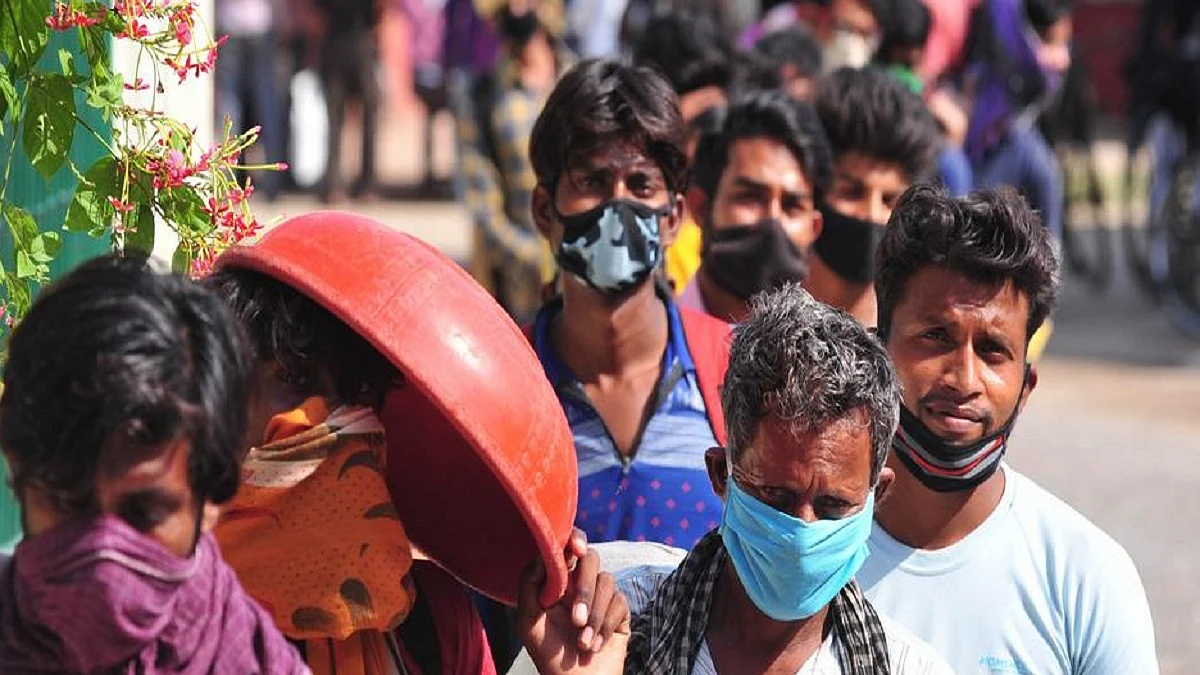More than 600 dead due to lockdown even as COVID-19 kills over 4,000
The figure includes twelve people who died in incidents of violence inflicted by police forces. There were 120 cases of suicide related to lockdown and 205 deaths caused by lockdown-induced accidents

The country had recorded 4,021 deaths on account of COVID-19 by May 25; deaths on account of the lockdown, not directly related to the novel coronavirus, stood at 611 a few days ago.
Volunteers have been tracking all deaths in the lockdown period in India not directly linked to novel coronavirus infection. By May 22, they recorded 611 deaths. The actual figure could be higher, since the process of recording involved dependence on media reports of such death. Fifty six deaths that occurred since the lockdown came into effect on March 25 appeared to be connected to the lockdown, but could not be established as indeed lockdown-related, so were not included in the total tally.
Researchers found that of those dying from the lockdown, 42 were related to exhaustion. These were workers walking home hundreds of kilometers in the summer heat, after being stranded in cities with no source of income as the lockdown came into effect with a four-hour warning after Prime Minister Narendra Modi’s televised speech at 8 pm on March 24. With the lockdown period extended four times, workers see hopes of returning to their workplace receding.
There were 50 reports of people dying of alcohol withdrawal symptoms, unable to get the drink they were addicted to. This is a medical condition described as “delirium tremens”, the result of sudden changes in the nervous system that occur when a heavy drinker suddenly stops, a condition that could be foretold and prevented.
Fifty four deaths were of people who needed treatment for ailments other than novel coronavirus infection, and could not access treatment in the lockdown period. Twelve people died in incidents of violence inflicted by police forces. There were 120 cases of suicide related to the lockdown and 205 deaths caused by lockdown-induced accidents.
The database of non-COVID deaths under lockdown is maintained by a small team of volunteers, among them a teacher of law at Jindal Law School, Indian PhD students in the US and software professionals. There are now over 400 news reports of such deaths archived at
By May 25, the virus had claimed 4,021 lives in India. While it is true that this is a new and more aggressive coronavirus than those previously known, one with no known treatment yet, the measures to combat its spread have clearly diverted attention from other diseases that cause higher mortality, and for which treatment is available.
Tuberculosis, for instance, kills over 4 lakh Indians each year, and this figure represents 32 per cent of all deaths from TB in the world. It is a disease that claims over 1000 lives each day of the year. Since 1990, a cure is possible for TB in six months. Even so, in India, 10 per cent of patients die because they either do not go to a doctor, or only approach one too late. Eighty per cent of TB patients first approach a doctor in the private sector; where quality of treatment can vary wildly. It is estimated that over a lakh TB patients have the drug resistant variety of bacteria. Less than 30 per cent of these patients receive treatment.
From Agra alone, there is a report of a huge spike in TB deaths in the lockdown period .
This is likely to be occurring in other parts of the country too, and has not been included in the lockdown deaths figure yet because researchers have been unable to establish a connection to the lockdown.
There were also 109 farmer suicide cases from Marathwada in the lockdown period, and these too could not immediately be linked to the lockdown decision, though it is likely that farm distress increased as those harvesting crops found it hard to transport the produce for sale.
Starvation is clearly causing death too, as in the case of five-year-old Nemani in Latehar district of Jharkhand, who died on May 16. The government is reluctant to admit that the death was on account of starvation. The girl’s father, a brick kiln worker who lived away from his family, was unable to send money home after work came to a standstill with the lockdown. The girl, one of eight children, had not eaten in days. Economist Jean Dreze, who visited the family home, said they had no ration card, the roof of their home was broken; the family had few worldly possessions and nothing to feed the children. The girl’s father had TB.
Despite the lockdown, the virus has spread. The country cannot stay indefinitely locked down, and the government is now easing up, gradually permitting a larger number of activities to resume. It is early days yet, but the time will come when researchers will have to more deeply examine the basis of the lockdown decision and what purpose it served.
Those who did not live to see the end of the lockdown must not be forgotten. The lessons to learn from this experience must be shared widely, so decision-making in future is better informed.
“There is an active denial of the crisis caused by the unplanned lockdown,” the volunteers write, “and therefore it becomes more important to record these deaths for public memory.”
Also Read: ‘Allah aeysee Eid phir Kabhi na ho’
Follow us on: Facebook, Twitter, Google News, Instagram
Join our official telegram channel (@nationalherald) and stay updated with the latest headlines
